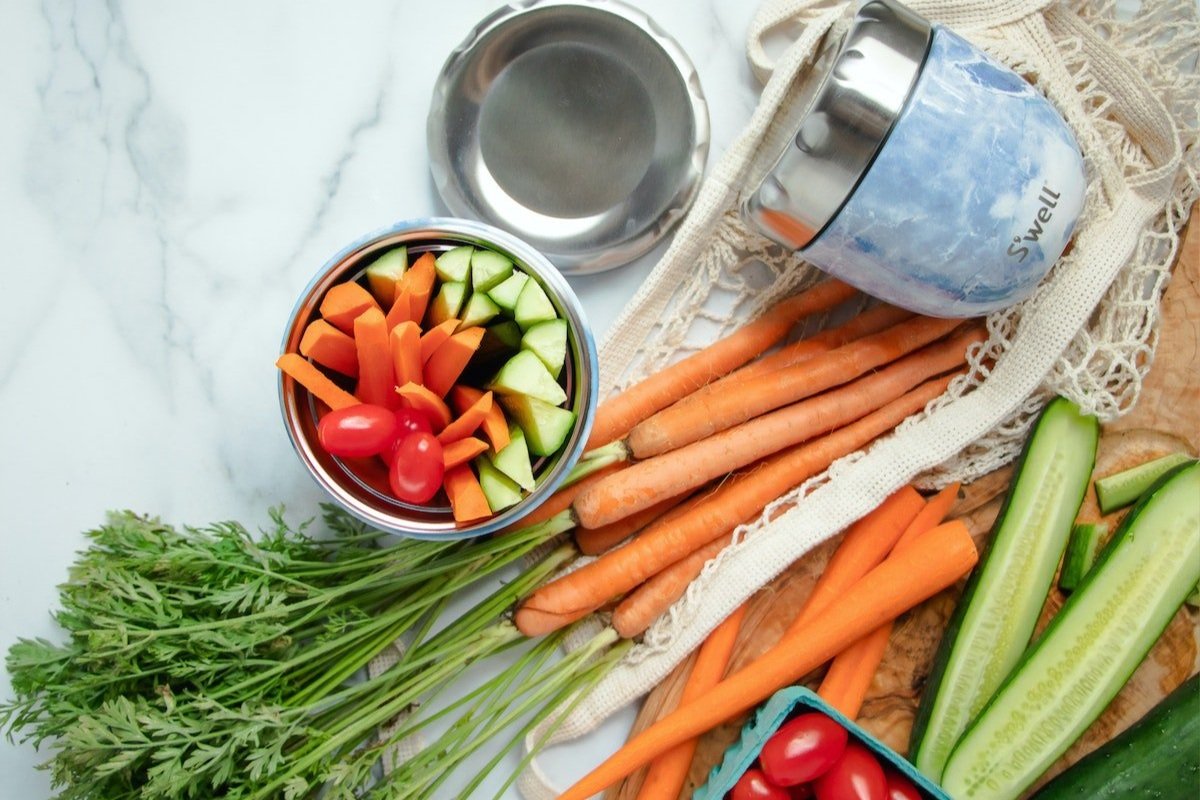Tips to help transition your child to whole food lunches
Transitioning from a diet of processed foods to a nutritious whole food lunch is likely to be met with resistance. Here are my top tips to help navigate the change.
For some of you, providing your child with a nutritious lunchbox filled with a variety of whole food ingredients is just the norm. But for a large majority, transitioning from a diet of processed foods has been somewhat challenging, especially if your child is a picky eater.
Not only is this a process that you, as a parent, has to go through to learn and change habits, it can also be a challenging adjustment for your children. There is likely to be resistance no matter whether your child is a 5 or a 16-year-old. New foods, ample veggies and a lack of sugary treats is a big change for kids, particularly if that's what they've always known.
When it comes to healthy eating and lunchboxes, children may also start to feel abnormal and different from their peers. They may experience bullying such as the subtle 'that smells disgusting' or 'why would you eat that?'.
What's important to remember is making small, but significant changes, to enhance your child's diet and nutrition intake. These healthy eating changes take time. It's a process and won't happen overnight. But with persistence and encouragement, the pay off is huge.
Tips to help transition your child to whole food lunches
If you're looking for some guidance about transitioning your children to eating more wholesome lunchboxes and encouraging healthy eating habits, take a look at these tips.
Discuss the changes openly, explaining why
Simply saying 'it's healthy' or 'we're going to be eating real food' is not enough to convenience children that the veggies and hummus is an acceptable snack in place for their usual chocolate bar. From a young age, children can develop an understanding of why they should adopt healthy eating habits and what processed foods do to their body.
Before you spring it on them at the start of term that you're going to be packing real food lunchboxes, discuss the changes with them. Get them involved; round table it; have a conversation.
Don’t make all the changes at once
Making a whole lot of healthy food changes is overwhelming for everyone in the family. It can put pressure on lunchbox making and mealtimes, and even if that's just for the short term, it can make the entire process unpleasant.
Instead, make one or two changes over the course of a couple of weeks. These may be simple changes like adding avocado to a sandwich or swapping white bread for whole grain. Perhaps you make one treat instead of a store-bought product.
Make initial changes around their favourites
There is always a way to make a family favourite that little bit healthier and there are plenty of recipes out there to guide you. You might add lentils into your child's favourite pasta meatballs dish or swap white flour for spelt flour in your regular banana cake recipe.
Your children can still enjoy their favourite food just with a subtly healthy twist.
Consider the rest of their daily intake
One thing to think about when transitioning to whole food lunchboxes is to consider the food choices in the context of the rest of their daily intake. For example, if your children love having a sweet after-dinner treat every night, then they perhaps don't need one in their lunchbox as well. If they tend to enjoy fruit after school, you may only put one portion of fruit in their lunchbox and balance it out with a couple of veggies instead.
Slowly move processed items from every day to a once a week, then once a term
Rather than ditch the processed items altogether and go cold turkey, try slowly reducing the occurrence they feature in your child's lunchbox. This will help to lessen the resistance you experience. If packets of chips, for example, are a regular feature in your child's lunchbox, change it to every second or third day. Then move it to once a week, until finally you get to once a term, special occasions or never at all!
Encourage them to get in the kitchen
Getting your kids in the kitchen, at whatever age, is the best way to educate them about real, whole foods. Not only are they going to be introduced to a variety of new foods, but they're also going to learn some valuable lifelong skills. If you are struggling to get them involved, head to the library or bookshop and browse some cookbooks with them. Invite a couple of their friends over for a pizza night or a fun bake-off.
Change your language
The language we use can directly influence your child's reaction whether it's about food or other aspects of their life. Try changing your language from simply saying the food is "healthy" to "nutritious" or just "food". Instead of saying I'm packing this in your lunchbox because it's healthy, make it fun and comment on the benefits it will offer them if they eat it. For example, "I'm adding a hard-boiled egg in your lunchbox because it's going to keep you feeling full and energised for longer” or “Did you know you need fibre-rich foods to help feed all the good bugs in your tummy.”
Need guidance?
Need guidance and support to help transition your child to a wholefood diet? Make a booking with the Nutrition For Kids health care team today!
BOOK YOUR FREE CALL TODAY!



